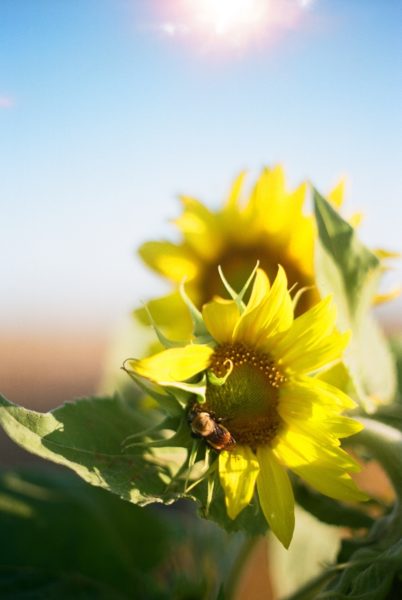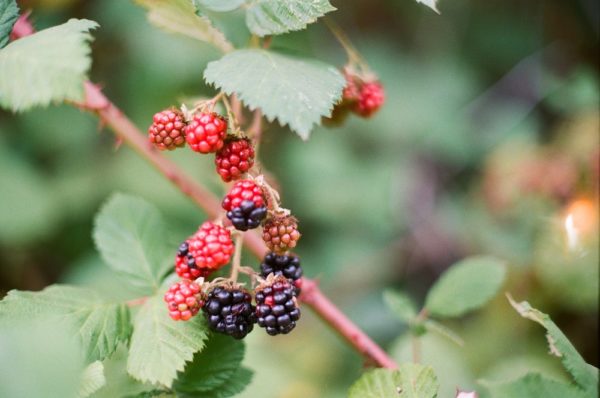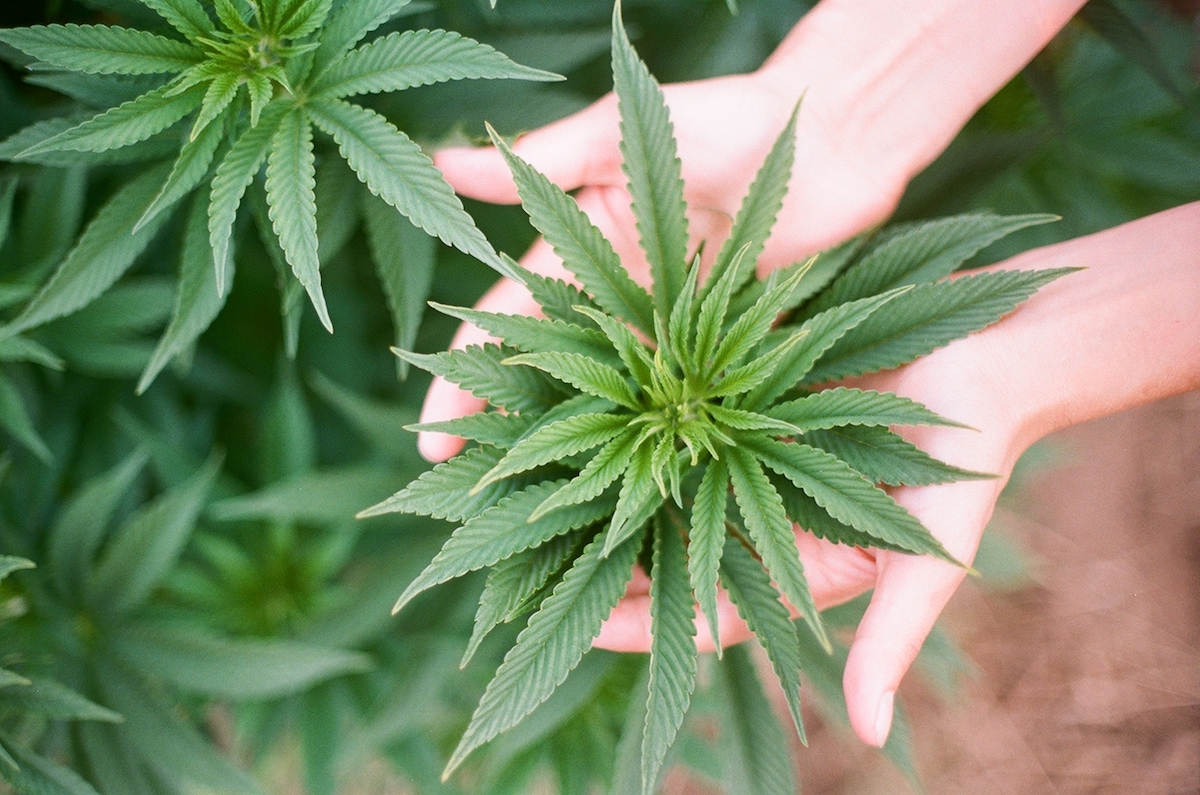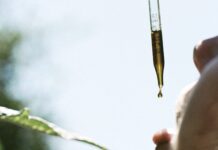Just like with eating whole foods, it is the entire plant, herb, or flower working together that gives us that elevated, more efficacious medicine.
The Endocannabinoid System
For our initial batch of facts, we’d like to present to you the system that supports the efficacy of utilizing the Cannabis sativa species as a plant medicine.

The endocannabinoid system (ECS) is one of the most important physiological systems that establishes and maintains human health through homeostasis or physiological balance. The ECS regulates critical bodily functions that affect how we eat, sleep, relax, forget, and protect.
This system is made up of cannabinoids, their receptors, and the enzymes that build them up and break them down. These receptors and their endocannabinoids are found all over the body: in the brain, the nervous and skin tissues, glands, immune and digestive cells, and major organs, virtually affecting all aspects of the body. With their complex cellular communicative functions, endocannabinoids are a bridge between body and mind.
Discovered only recently in 1992, this vast communication system has a primary goal of bringing the body back into balance despite the state of the body’s external environment. Essentially, a healthy endocannabinoid system allows you to feel an inner sense of stability even among external turmoil (traffic, stressful work environment, long TSA lines, a tiger chasing you, etc.). So a healthy ECS means a balance between body and mind. What does a dysfunctioning ECS look like?
Clinical Endocannabinoid Deficiency (CECD)
Clinical Endocannabinoid Deficiency (CECD) is a condition that occurs when the body is not producing enough endocannabinoids or cannot properly regulate them. This dysfunction of the endocannabinoid system can lead to illnesses that affect one or more of the bodily functions that the ECS regulates.
Coined by Dr. Ethan Russo in 2004, the term Clinical Endocannabinoid Deficiency describes an imbalance in the otherwise healthy functioning endocannabinoid system. This deficiency is either due to a lack of endocannabinoid production or caused by the dysfunction in regulating cannabinoids.
Due to its part in restoring balance when faced with illness or injury, the endocannabinoid system plays a critical role in the regulation of disease. Scientists now believe CECD is linked to fibromyalgia, chronic pain, depression, migraines, Irritable Bowel Syndrome (IBS), and Post-Traumatic Stress Disorder (PTSD), to name just a few from this growing list.
Because of the promising functions of the ECS, the medical world is hopeful that this system will provide clues into how to prevent cancer and disease. For us as individuals, to better understand this system and how to nourish and care for it best, we can come closer to understanding how to prevent ailment of the body and mind.
How does Whole Hemp CBD play a role in an unhealthy endocannabinoid system?
Phytocannabinoids, such as CBD in its whole plant form, often have a therapeutic effect when they interact with our body’s endocannabinoid receptors. This implication may mean phytocannabinoid supplementation can improve the overall functioning of the endocannabinoid system. To better understand plant-derived cannabinoids, let’s dive into cannabinoids.

What are Cannabinoids?
Cannabinoids are a group of compounds that are named after the species Cannabis, as it is this plant that led to their discovery.
Cannabinoids interact with or influence the endocannabinoid system.
There are three groups of cannabinoids:
- endocannabinoids (made within the body)
- phytocannabinoids (plant-derived)
- synthetic cannabinoids (made within a lab)
All three groups influence the body back into homeostasis via cellular communication. It is important to note that there is much controversy over the efficacy and safety of synthetic cannabinoids. Although there is strong anecdotal evidence, very little research is currently available regarding the effectiveness of phytocannabinoids outside the use of tetrahydrocannabinol (THC).
There are over 110 phytocannabinoids unique to the Cannabis sativa species. Many phytocannabinoids also found in everyday dietary plants and herbs such as black pepper, cloves, hops, echinacea, green tea, ginseng, flaxseed, and dark chocolate!
Much like wine, coffee, and tomatoes, Cannabis plants have a wide variety of cultivars (also known as strains) that you can choose from depending on the desired effects you’re looking to explore. One factor in these varieties is the types and amount of phytocannabinoids the plant produces.
Onda’s Full-Spectrum of Cannabinoids
Since Onda carries full-spectrum CBD-rich hemp products, we process plants that are made up mostly of cannabidiol (CBD). However, there is a full range of synergistic phytocannabinoids found in our products that give you boosted efficacy. This cannabinoid profile includes cannabichromene (CBC), cannabigerol (CBG), and trace amounts of tetrahydrocannabinol (THC).
To see the various plant compounds found in Onda oil, visit ondawellness.com/CBD-products, and press “View our Lab Test Results” located on our product description pages.
What makes Onda Whole Hemp Nutrition: The Entourage Effect, Chlorophyll, Terpenes, and Flavonoids
Just like with whole food nutrition versus consuming enriched bread or vitamin supplements, CBD is more effective and bioavailable when working in synergy with the rest of the hemp plant.
To further explain, the whole plant of Whole Hemp™ CBD refers to the infusion process of this particular compound. This infusion process – that is, pulling the plant from the hemp fibers into coconut oil – still contains the other healthful cannabinoids like CBG, CBN, THC, as well as the natural range of beneficial terpenes, flavonoids (cannaflavins), antioxidant-rich chlorophyll, polyphenols, amino acids, and other healthy fatty acids. True Whole Hemp™ CBD should have a deep green color and leafy green taste.
The Entourage Effect
The active compounds of cannabis seem to work more effectively when consumed together in a synergistic way
The Entourage Effect is a theory hypothesized in 1999 by Dr. Raphael Mechoulam that proposes a synergistic relationship between the active compounds cannabinoids, terpenes, and flavonoids in Cannabis plants. These relationships will both change and enhance medicinal effects depending on the profile of each cultivar (strain).
A very exciting time in the research of cannabis and hemp plants, as we are beginning to understand – both through preliminary research and a growing wave of anecdotal evidence – that the active compounds of cannabis seem to work more effectively when consumed together in a synergistic way.

What is Synergy?
Synergy means that the whole is greater than the sum of its parts.
For instance, the phytocannabinoid CBD works better with the company of its phytochemical buddies, such as fatty acids, a full profile of terpenes, and the other phytocannabinoids like THC, CBG, and CBC to name a few. We can even go beyond these plant compounds by proposing the health of the hemp farm and its synergy with the natural cycles of the earth play a role in the vitality of your CBD products.
Just think of a bee and flower, the two need one another to both survive and thrive.
Chlorophyll
When it comes to processing our hemp plants for your consumption, you best know we aren’t removing any of the green! We believe that true plant medicines start and finish as whole as possible, and thanks to this deep pigment hanging around in our oil, all our products are as green as the hemp they came from.
Chlorophyll is responsible for (and vital in the process of) trapping sunlight and turning it into sugary energy for plant nourishment, as well as providing clean oxygen for the rest of the planet to breathe in! In other words, chlorophyll traps sun energy and turns it into plant food and oxygen… and pretty much is the container of life and vitality for all life on Earth. That’s pretty special, right?
Fun Fact: Chlorophyll and blood plasma have nearly identical molecular structures!
Some healthful perks in consuming chlorophyll-rich foods and medicines:
- It is detoxifying/cleansing for the blood⠀
- It acts as an anti-inflammatory and antibacterial agent on the skin
- Chlorophyll is a natural deodorizer
Terpenes
Terpenes (pronounced tr-peenz) are active compounds that give plants their aromas while also influencing taste. These same compounds are also the building blocks for larger and more complex molecules, such as steroids, pigments, and vitamins. There are estimated to be 25,000 different terpene structures that exist in nature and Onda is packed with a handful of these.
Terpenes show a wide range of physiological influences including sedation, euphoria, anxiety relief, and anti-inflammatory response, and are ultimately designed for plants to deter bacterial infections, sun damage, and parasites while attracting beneficial insects and mammals.
Since terpenes are volatile compounds, many factors affect terpene production. This includes the climate, weather, plant’s maturity, the use of pesticides and fertilizers, and the richness of soil the plant grows in. Even the time of day or the presence of a bug can influence a plant’s development of certain terpenes.
Onda contains terpenes ranging from linalool, myrcene, beta-caryophyllene, humulene, limonene, geraniol, and alpha-pinene.

Flavonoids
Flavonoids are phytonutrients found in nearly all plants, flowers, fruits, and vegetables.
Called cannaflavins when specific to Cannabis, these medicinal elements contribute to the color, aroma, and flavor, working in synergy with other active compounds like terpenes and phytocannabinoids. Cannaflavins are being studied for their antioxidant, anti-fungal, and anti-inflammatory properties, and research is looking promising! This synergistic relationship shows us that it isn’t about a single compound when it comes to cannabis/hemp medicine. Just like with eating whole foods, it is the entire plant, herb, or flower working together that gives us that elevated, more efficacious medicine.
Looking to boost your dietary flavonoids? The main dietary sources of flavonoids include tea, citrus fruit, citrus fruit juices, berries, red wine, apples, and legumes.

Holistic hemp medicine is much like holistic nutrition.
Bottom line, Whole Hemp CBD means we utilize the entire Cannabis flower and their leaves from start to finish. Period. This old world, apothecary-styled practice means we value the chlorophyll, fatty acids, terpenes, phytocannabinoids, and cannaflavins initially found in our hemp plants and work to keep all intact for the most significant synergistic effects.
Have you had your dose of Onda yet? Experience the benefits of Whole Hemp CBD by using code INTHEKNOW20 for 20% off Onda goods.
This sale ends when January does, so don’t wait 🙂











